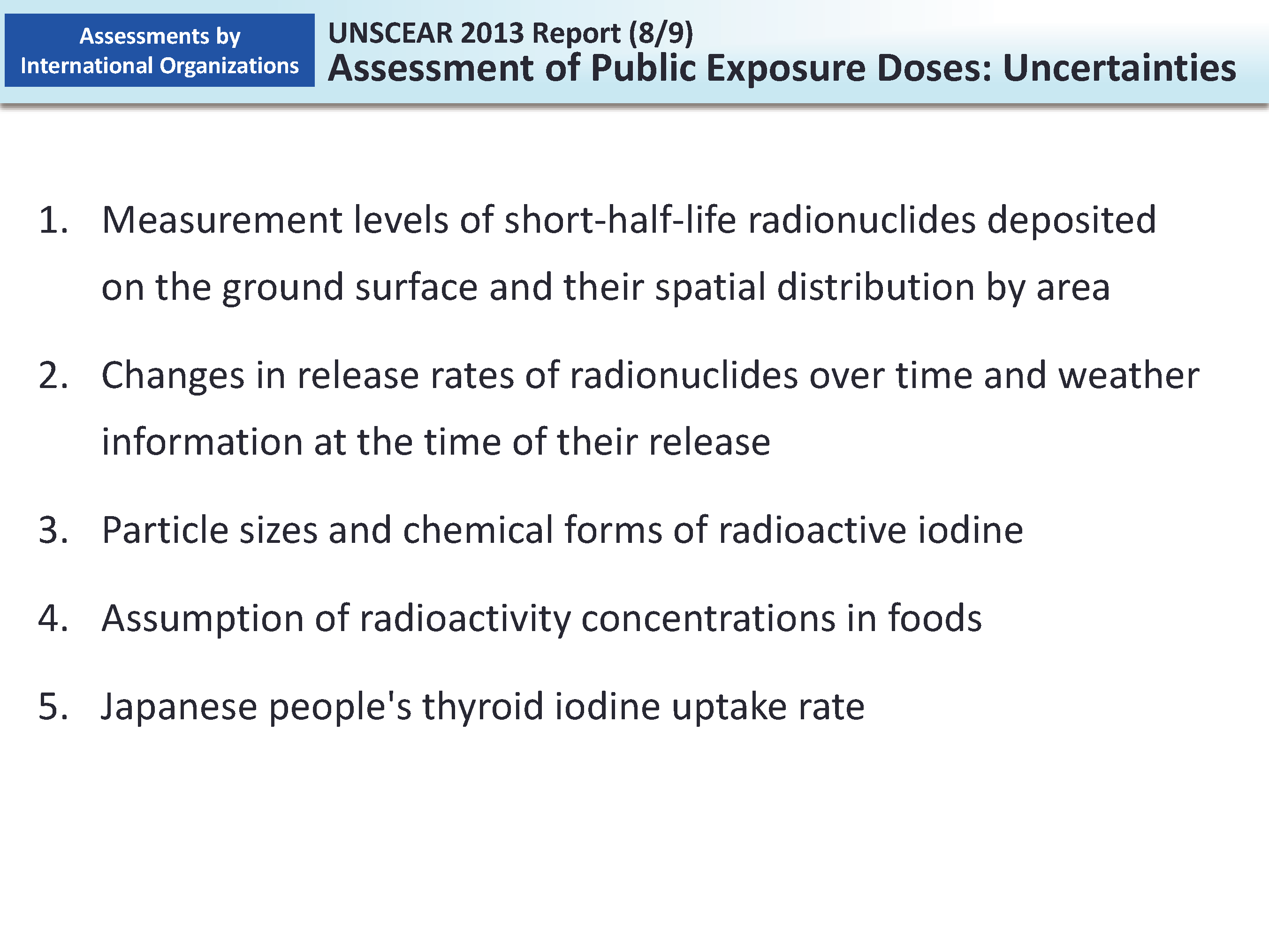UNSCEAR 2013 Report (8/9)
Assessment of Public Exposure Doses: Uncertainties
The UNSCEAR estimated public exposure doses from radioactive materials released due to the accident at Tokyo Electric Power Company (TEPCO)'s Fukushima Daiichi NPS under certain assumptions based on insufficient knowledge and information, and therefore, it considers that the results contain certain uncertainties.
1. Uncertainties concerning measurements of radionuclides deposited on the ground surface
- Uncertainties in measurement values of Cs-134 and Cs-137 are relatively small.
- Regarding I-131, whose half-life is approx. 8 days, uncertainties are significant due to the fact that its radioactive decay had progressed before the measurement.
2. Uncertainties concerning changes in release rates of radionuclides over time and weather information at the time of their release
- Estimation of doses for people who evacuated in March 2011 is based on the results of the Atmospheric Transport and Dispersion Model (ATDM) simulations.
- As a result, the estimation results may be overestimated or underestimated by a factor of up to typically four to five.
3. Uncertainties affecting assessment of absorbed doses to the thyroid
- There was no data on relative amounts of particulate and gaseous forms of I-131 in the air and the estimation was made under the assumption that equal amounts of iodine were released in particulate and gaseous forms. This resulted in an uncertainty of up to about a factor of two over the periods of the principal exposures.
4. Uncertainties concerning the assumption of radioactivity concentrations in foods
- Foodstuffs were not sampled randomly, because the authorities gave priority to identifying foods with the highest concentrations. It was therefore likely that the values of average concentrations used for the assessment led to overestimation.
- Assumptions concerning the pattern of food distribution and consumption (overestimation of the intake of foods produced in Fukushima Prefecture) were another source of uncertainty.
- Measured radioactivity concentrations in foods below the detection limits were all assumed as 10 Bq/kg, and this led to overestimation of internal exposure through ingestion of foods for the first one year.
5. Uncertainties concerning Japanese people's thyroid iodine uptake rate
- Japanese people's thyroid iodine uptake rate may be different from the standard model adopted by the ICRP (the level of uncertainties is smaller than those concerning the aforementioned four items and a possible reduction in exposure doses due to this factor is less than 30%).
[Relevant parts in the reports]
- UNSCEAR Report (prepared based on paragraphs 110 to 115 on pages 57 to 58, Scientific Annex A (Japanese-language version) (Original English version: paragraphs 110 to 115 on pages 60 to 61), and C113 to C131 of "IV. Uncertainties" on pages 188 to 192, Appendix C)
- Included in this reference material on March 31, 2015

